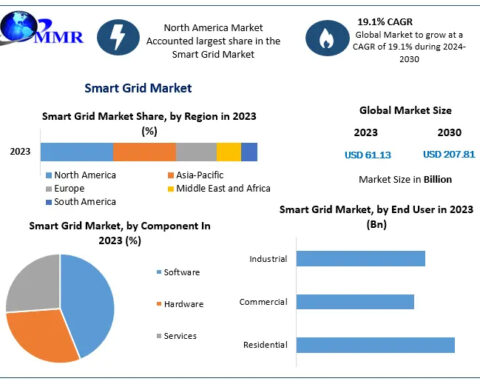Synopsis:
Innovations are vital for business survival in today’s fast-paced market. Product engineering plays a crucial role by turning ideas into reality, optimizing designs, and ensuring products meet market needs. It helps companies stay competitive and adapt to changing consumer demands.
This blog explores how product engineering drives innovation and business success. Enterprise software solution providers help businesses innovate through emerging technologies, offering expertise in areas like AI, IoT, and cloud computing to create cutting-edge products that meet market demands and drive growth.
The Impact of Product Engineering on Business
Product engineering is a game-changer for businesses across industries. It transforms raw ideas into market-ready products, bridging the gap between concept and reality. By leveraging cutting-edge technologies and methodologies, product engineering enables companies to create innovative solutions that address real-world problems.
According to a McKinsey report, companies that prioritize product engineering see a 10% increase in revenue growth compared to their peers. This process not only enhances product quality and functionality but also reduces time-to-market, giving businesses a competitive edge.
Product engineering is particularly crucial in today’s rapid technological landscape, where staying ahead of the curve can mean the difference between market leadership and obsolescence.
Unveiling the Product Engineering Process
The product engineering process is a structured approach to turning ideas into tangible products. It involves multiple stages, each critical to ensuring the final product meets market needs and quality standards. Let’s delve into these stages to understand how innovative ideas become successful products.
Ideation: Brainstorming and conceptualizing new product ideas. This stage involves market research, trend analysis, and creative thinking to generate innovative concepts.
Concept Development: Refining ideas into viable product concepts. This includes creating detailed specifications, considering technical feasibility, and assessing market potential.
Design: Creating detailed product designs. Engineers use CAD software to develop 3D models, considering aesthetics, functionality, and manufacturability.
Prototyping: Building working models of the product. This allows for testing and refinement of the design before full-scale production begins.
Testing: Rigorous evaluation of the prototype. This stage involves functional testing, user testing, and compliance checks to ensure the product meets all requirements.
Manufacturing Planning: Developing strategies for efficient production. This includes selecting materials, designing production processes, and planning for scalability.
Production: Mass manufacturing of the product. This stage involves quality control measures to ensure consistency across all units produced.
Launch and Support: Introducing the product to the market. This includes marketing strategies, distribution planning, and ongoing customer support.
Digital transformation providers like Sigma Solve offer comprehensive expertise across all stages of the product engineering process. Our team of skilled engineers and designers can guide your project from initial concept to market launch. We leverage cutting-edge technologies and industry best practices to ensure your product is innovative, high-quality, and market-ready. Our holistic approach covers everything from ideation to post-launch support.
How Product Engineering Tackles Common Challenges
Product development is a complex process fraught with challenges. From technical hurdles to market uncertainties, businesses face numerous obstacles in bringing innovative products to life. Product engineering solutionprovides systematic approaches to overcome these challenges effectively.
Common challenges:
Technical Complexity: Advanced products often require intricate designs and cutting-edge technologies, posing significant engineering challenges.
Time-to-Market Pressure: In fast-paced industries, delays in product launch can result in lost market share and competitive advantage.
Cost Overruns: Unexpected issues during development can lead to budget overruns, potentially jeopardizing project viability.
Changing Requirements: Market needs and technological landscapes can shift during development, necessitating adaptable design processes.
Quality Assurance: Ensuring consistent product quality across large production runs can be challenging.
Regulatory Compliance: Many industries have strict regulations that products must meet, adding complexity to the development process.
Integration Issues: New products often need to integrate with existing systems or technologies, which can be technically challenging.
How product engineering helps:
Systematic Approach: Product engineering uses structured methodologies to break down complex problems into manageable tasks.
Rapid Prototyping: Advanced prototyping techniques allow for quick iteration and testing, speeding up the development process.
Cost Optimization: Engineering analysis helps identify cost-effective design and manufacturing solutions, keeping projects within budget.
Agile Development: Flexible engineering processes allow for adapting to changing requirements without major setbacks.
Automated Testing: Advanced testing methodologies ensure consistent quality across production runs.
Regulatory Expertise: Product engineers are well-versed in industry regulations and design products to meet compliance standards.
Systems Integration: Engineers use their expertise to ensure seamless integration with existing technologies and systems.
The Human Touch in Product Engineering
While technology plays a crucial role in product engineering, the human element remains indispensable. User experience (UX) design and market research are key aspects that require human insight and creativity. According to a study by Forrester, every dollar invested in UX brings 100 dollars in return.
Companies like Sigma Solve understand that successful products not only function well but also resonate with users on an emotional level. Our approach combines technical expertise with deep user understanding, ensuring products that not only meet but exceed user expectations.
By integrating human-centered design principles throughout the engineering process, we create products that are not just technically sound, but also intuitive, enjoyable, and aligned with real user needs.
Benefits of Partnering with a Product Engineering Expert
Collaborating with a product engineering expert offers numerous advantages. It provides access to specialized skills and cutting-edge technologies that may not be available in-house. According to a Deloitte survey, 59% of companies outsource to cut costs, while 57% do so to focus on core business functions.
Partnering can significantly reduce time-to-market, crucial in today’s fast-paced business environment. It also allows for scalability, enabling companies to ramp up or down based on project needs. Moreover, working with experts minimizes risks associated with product development, ensuring higher quality outcomes and improved ROI.
Businesses gain a partner committed to turning innovative ideas into market-ready products efficiently and effectively.
Leveraging Technology Trends for Product Engineering
Artificial Intelligence (AI): AI enhances product design, predictive maintenance, and user experience. It’s projected to add $15.7 trillion to the global economy by 2030.
Internet of Things (IoT):IoT enables smart, connected products. The global IoT market is expected to reach $1,386.06 billion by 2026.
3D Printing: Accelerates prototyping and enables custom manufacturing. The 3D printing market is forecasted to reach $63.46 billion by 2028.
Virtual and Augmented Reality: VR and AR improve design visualization and product testing. This market is expected to reach $297.9 billion by 2024.
Cloud Computing: Enables collaborative engineering and scalable computing power. The cloud computing market is projected to reach $832.1 billion by 2025.
Conclusion
Product engineering is crucial for successful product development in today’s competitive market. It transforms ideas into innovative, market-ready products, overcoming technical challenges and meeting user needs. With rapid technological advancements, partnering with product engineering experts has become more important than ever for businesses aiming to stay ahead.
Consider partnering with a product engineering expert like Sigma Solve to turn your innovative ideas into reality. Our expertise can help you navigate complex development processes, leverage cutting-edge technologies, and bring successful products to market faster.
Author Bio:
KinjalSoni is a professional blogger in a technology realm and a Digital Marketing expert at Sigma Solve, leading digital transformation services provider. She has been doing extensive research in emerging technologies and has written across AI, ML, Cloud Computing, Robotic Automation and related technology domains.
Source: https://businessfig.com/why-do-you-need-product-engineering/























